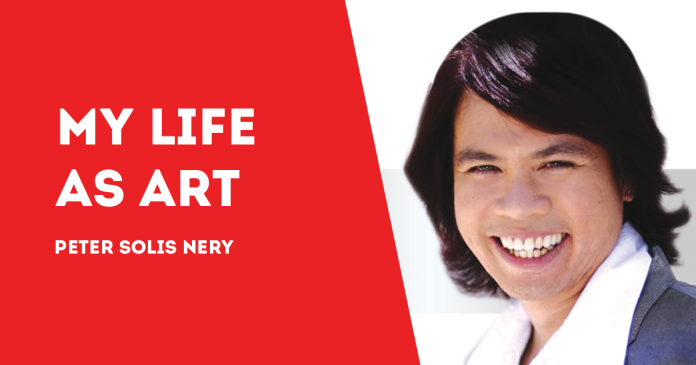
HOW important is it to study the traditional art of your region or locality?
Traditional art refers to the skills and knowledge of a certain culture or group of people which are passed down through master craftspeople and their apprentices. Pottery, weaving, and woodcrafts are examples of traditional art.
If you are interested to have a career as a contemporary artist, let your traditional or indigenous art inspire you. But do not let it define, or limit you as an artist. My challenge for you is to create, to move forward, to use your local culture as a starting point, but always to push your own art forward into the future, and be bigger than your local culture.
If you are just studying this course as an appreciation class, then look around you and celebrate your culture and your people, taking pride in them, considering that they are particular to you.
If you are in a mountainous region, celebrate your mountains and carabaos. If you are by the sea, celebrate the waves, the boats, the fish and sea animals.
Know that the patterns in your traditional weave (whether of mats or textile or bamboo house design) may be unique, or more exotic than in those in the neighboring region, or province, or town. Take pride in those.
***
Do you need to know all the arts from all the 17 regions in the Philippines?
Maybe not. What for? If you understand that each region is unique, but all contribute to what is the “melting pot” that is Filipino culture, identity, and sensibilities, maybe that is all that you need to understand in this course.
If you are truly interested to pursue art as a career, or to study art appreciation, you can research them at length outside this course. You can travel. You can see and discover for yourself the beauty of Philippine (regional) arts.
***
Do you need to know all the National Artists and Living Treasures of the Philippines?
Maybe not. What for? If you understand that some of them helped shape or celebrate our Filipino culture, identity, and sensibilities, then maybe that’s all that you need in this course.
If you are truly interested to pursue art as a career, or to study art appreciation, you can research them at length outside this course. You can use them as inspiration, as starting points. Maybe you can still contact some of them; maybe you can still see some of their works. Then, you can see and discover for yourself the beauty of Philippine art.
***
Do you need to know the history of Philippine art from prehistory to the present, that is, our contemporary Philippine arts from the regions?
Maybe not. What for? If you understand that our history and our colonizers have influenced our Filipino culture, identity, and sensibilities, and therefore our art, then maybe that’s all that you need in this course.
***
But let’s review:
In prehistoric times, our art and culture were ethnic, traditional, mostly rituals that were integral part of life: we sang at work, we danced to relax, we told stories to amuse and explain some phenomena, we decorated ourselves and our houses, our baskets and weapons to attract the opposite sex, or ward off the enemies. (Well, slow down on that “attract the opposite sex”!)
In the Spanish era with European Christianity, we made religious art according to European standards, we worshipped, dressed and ate, celebrated events and wrote literature according to how the Spaniards taught us.
In the American era, we had more Western influence: more commercial, more secular ideas influenced and affected our art and literature. Movies, new ways of writing stories and poetry, new fashion came to us. We became more relaxed, more experimental in our creation of artworks.
Then, the World War II in the Pacific. The Japanese era that wanted to erase the Western influence on Filipinos. Japan wanted a strong Asia, thus the promotion of oriental art in the Philippines. It was a short occupation, but the idea was planted, so we explored Orientalism in our art.
After the war, came our Philippine Independence from America, the start of our collective quest for our Filipino identity. We produced art and literature to celebrate and identify what we are, or what we should be, as a Filipino people. Asian, oriental, yes; but also colonized by Spain for over 300 years, by the United States for almost half a century. Nothing like us in Southeast Asia, we are nothing like our neighboring countries. Unique Filipino people, we are a “melting pot” of cultures.
Then, the 1970s, the birth of contemporary art, the Martial Law years, the Marcos dictatorship. Protest art, resistance art. Artistic response to social issues, abuses, and injustices. Art was used to wake people up from complacency and blind obedience.
Then, the EDSA People’s Power Revolution of 1986.
Then, same old, same old until 1994, when Internet became available in the Philippines, but first, mostly for corporate or business use. In the early 2000s, most Filipinos started using the Internet for research, and social media was in the form of Friendster, MySpace, and the early intranet, or the restricted (usually private) communication network.
In 2004, Facebook was launched, but Philippine use wasn’t crazily into it until 2006-2008.
In 2007, iPhone became available, which made it possible for you to Google art anywhere in the world from your fingertips.
Starting 2010s, Filipino artists of all persuasions (not just blogging writers) put the Internet to good use. Virtual galleries, virtual museums, art promotion groups, self-celebrity on social media (Facebook, Instagram, YouTube). In this 2020s, you too can put your creative works online, even if they are just TikTok dance moves. (To be continued/PN)

